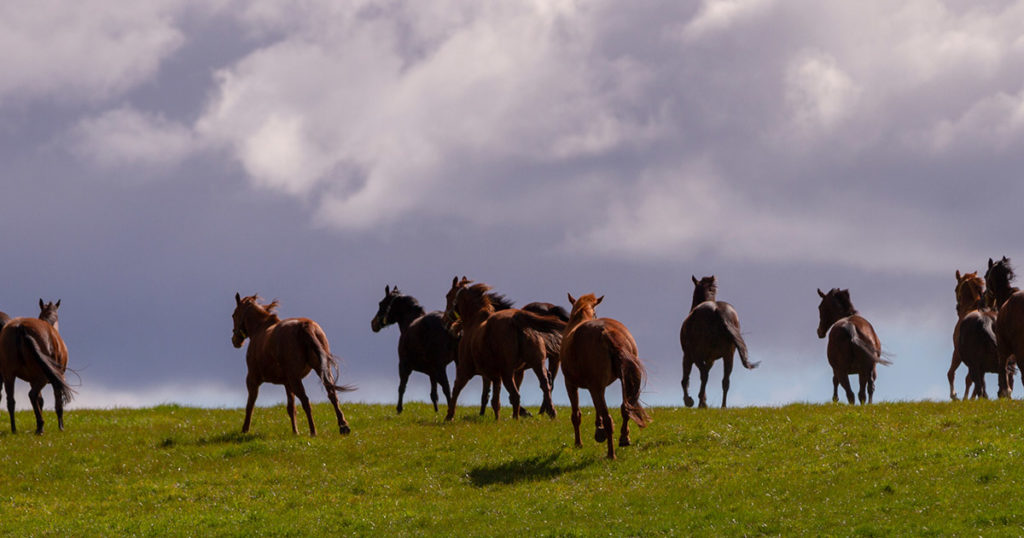One of the most significant impacts of modern domestication of horses is the profound reduction in daily physical activity. Even horses who are worked regularly and are in peak fitness are likely to do far less exercise than their wild counterparts.
Many horses spend the majority of their days in small paddocks, yards and stables. They only need to move minimally to have access to feed and water. Essentially, they are quite idle. Although widely variable depending on discipline, many horses in hard work don’t do more than 1-2 hours most days. Ridden time aside, they are essentially quite idle.
This is in stark contrast to the way horses move in herds in nature. Natural social groups of horses have evolved to never stop moving or eating for very long. Research in semi-feral herds has shown that horses move at least 17km per day! At different periods throughout the year, the distance they cover can increase significantly. When in search of forage or when interacting with other herds, horses may move up to 160km daily.
This movement plays a crucial role in keeping horses healthy. Contrastingly, lack of physical movement in domestic horses is an important contributing factor in many health conditions we see today. The large volumes of physical activity (along with the diet of wild horses) helps to prevent horses being overweight. The physical activity improves insulin sensitivity an important factor in metabolic syndrome, as well as many cases of laminitis. Laminitis in our horses is largely a ‘man-made’ disease.
The constant physical activity increases bone density and strength, as well as promoting muscle, tendon and ligament strength and development. This is likely to lead to stronger, sounder horses.
So how can we implement some of these benefits in our man-made modern settings?
We can take some of the principles and incorporate them into the management of our horses. The suggestions listed below are general suggestions which can be used where they are possible, safe and feasible. It’s about making the best of the situation and facilities that you have.
Where possible:
- Choose keeping your horse turned outside in preference to stabling.
- Choose larger fields over smaller paddocks and yards.
- Choose turning out in mobs as opposed to turnout alone to encourage movement and interaction.
- Consider the implementation of natural track systems in paddocks to encourage movement.
- Feed well away from water source- ie water at one end of the paddock, feed at the other.
- Consider hand walking the horse that isn’t ridden frequently.
For the majority of horses and ponies, increasing their overall daily physical movement and activity is most beneficial. Small changes can have a significant positive impact on your horse’s health, soundness and longevity.

Camilla Whishaw is a highly regarded, experienced horsewoman and naturopath, helping to holistically treat and manage a broad range of equine health conditions and injuries, with a passion for mare and stallion fertility.
As a world-renowned practitioner, presenter, author, and consultant in the field of Equine Naturopathy, Camilla shares her knowledge through keynote presentations, interviews, lectures, panel sessions, and workshop training.





